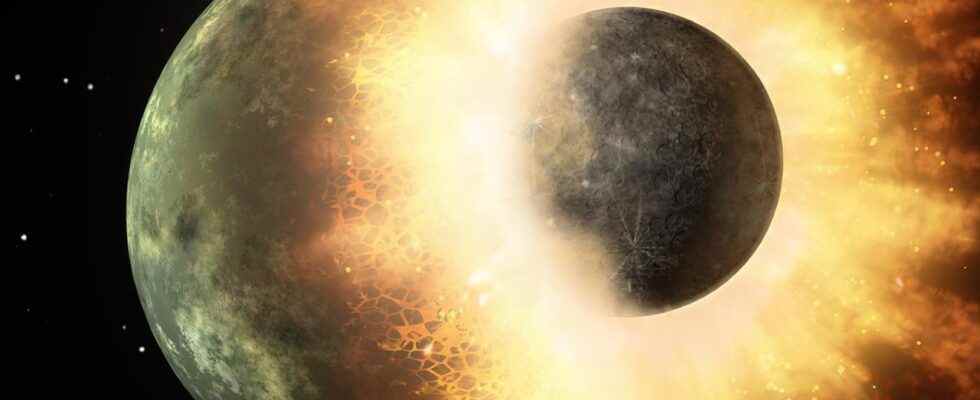What happens as a result of a star collision? We can give the answer to this frequently asked question with an updated news. Young planetary systems grow by colliding. Scientists in the Solar System world and MoonHe thinks that ‘ is the product of such huge collisions.
Such collisions were commonplace in early systems, astronomers say. However, it was not possible to observe this in other stars. With this, MYTH, National University of Ireland and Cambridge University The researchers made a new observation. Here are the findings of the interesting article…
Star collision occurred 200,000 years ago
International scientific team, peer-reviewed scientific journal natureHe published his findings, the first of its kind, in . MIT-led team, 95 light-years from Earth occurring around a star system a big collision discovered his findings.

astronomers, HD 172555 He said the star is about 23 million years old. The collision was roughly the size of the Earth. terrestrial planet They determined that it occurred at least 200,000 years ago at a speed of 10 kilometers per second.
According to the researchers, the most important finding of the study is the observations around the star. gas and dust. Because it shows that as a result of such a high-speed collision, the larger star likely blew up some of its atmosphere.
Meanwhile, the star HD 172555 has been the subject of debate among astronomers because of the unusual composition of its dust. Observations in recent years have shown that the star’s dust is typical of astronomers. star debris disk It showed that it contains different minerals than expected. That’s why researchers focused on the history of stellar collisions.
Researchers searched for carbon monoxide
The team in Chile From the Atacama Large Millimeter Array (ALMA) studied images taken from 66 radio telescopes. Also around nearby stars carbon monoxide They looked at data in the ALMA public archive to look for symptoms. Because when we want to study the gas in the debris disks, carbon monoxide is often the brightest and therefore easiest to find molecule.

As a result of the analysis, the team found that around the star carbon monoxide Has detected. When they measured the amount, they found that the gas was about 20 percent of the carbon monoxide in Venus’ atmosphere. They also observed large amounts of gas orbiting surprisingly close to the star (about 10 astronomical units).
There is typically very little carbon monoxide this close to a star. Therefore, the team investigated why the gas was abundant and close. Having worked through several scenarios, the team finally determined that the gas a big collision agreed that it was a remnant.
